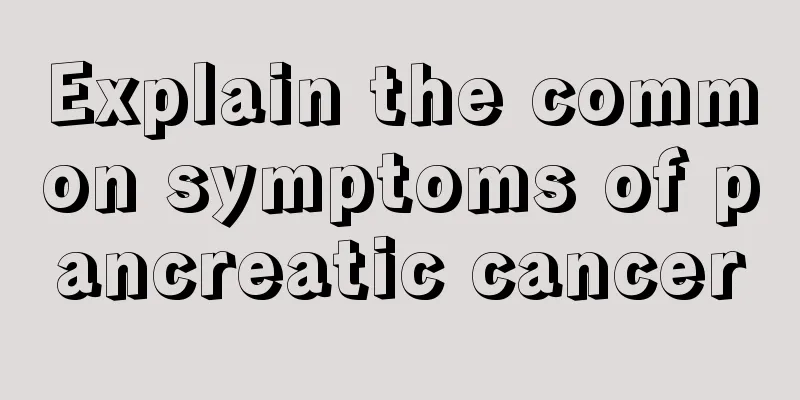What is poorly differentiated nasopharyngeal carcinoma and what are the treatments?

|
Nasopharyngeal carcinoma can be divided into many types, and different types may have different symptoms and treatment methods. The following will introduce to you what is poorly differentiated nasopharyngeal carcinoma? What are the treatment methods? Poorly differentiated nasopharyngeal carcinoma is the most common type of nasopharyngeal carcinoma. It has poor pathological differentiation and high malignancy. Its cancer cells tend to grow invasively and metastasize early, making it a more difficult type of nasopharyngeal carcinoma to treat. Poorly differentiated nasopharyngeal carcinoma includes poorly differentiated adenocarcinoma and poorly differentiated squamous cell carcinoma, both of which have similar malignancy. If poorly differentiated nasopharyngeal carcinoma occurs, it can be treated with the following methods: 1. Radical radiotherapy is the main treatment for poorly differentiated nasopharyngeal carcinoma, while palliative radiotherapy is mainly used in the treatment of middle and late stage poorly differentiated nasopharyngeal carcinoma. Although radiotherapy has a more direct killing effect on poorly differentiated nasopharyngeal cancer cells, it will also cause damage to normal cells. In clinical practice, it is often combined with traditional Chinese medicine treatment to play a role in reducing toxicity and increasing efficacy. For the treatment of poorly differentiated nasopharyngeal carcinoma that recurs after radiotherapy, if the lesion is limited to the posterior or anterior wall of the nasopharyngeal roof, there is no destruction of the skull base bone, the general condition is good, and those who have recently undergone radiotherapy and are not suitable for further radiotherapy can consider resection of the lesion. The combination of radiotherapy and chemotherapy can improve the treatment effect of poorly differentiated nasopharyngeal carcinoma. 2. In the early stage of TCM treatment of poorly differentiated nasopharyngeal carcinoma, the methods commonly used are clearing away heat and wind, cooling blood and detoxifying, promoting lung function and opening the orifices, and resolving phlegm and dispersing nodules; in the middle stage, the methods mainly focus on soothing the liver and relieving depression, clearing away heat and purging fire, and softening and dispersing nodules; in the late stage, the methods mainly focus on nourishing yin and cooling blood, tonifying the spleen and kidney, detoxifying and reducing swelling, and strengthening the body to fight cancer. Poorly differentiated nasopharyngeal carcinoma is a type of nasopharyngeal carcinoma. Although it is difficult to treat, patients should face the treatment positively. |
<<: What can I eat and what medicine can I take to treat nasopharyngeal cancer
>>: What is the cause of vomiting yellow water in the late stage of gastric cancer
Recommend
What are the causes of acne in different places
In modern life, people's pace of life has bec...
What can liver cancer patients eat to recover? These foods can be eaten in the late stage of liver cancer
What should liver cancer patients eat? Hepatocell...
How to get rid of sub-health status
Only by developing good living habits can you eff...
What foods are good for lung cancer patients? Diet methods that are beneficial to lung cancer patients
Lung cancer is a common cancer in my country. In ...
Is kidney cancer hereditary?
Kidney cancer is a malignant tumor that mainly oc...
Is it normal that the blood sugar level is 53 in the morning and 2 hours in the afternoon when fasting?
Most people need to check their blood sugar on an...
Hallucinations when sleeping at night
Hallucinations when sleeping at night are actuall...
Is the ground-glass nodule in the right lung lobe lung cancer?
Many patients believe that the symptoms of ground...
Are test-tube babies more likely to suffer from cerebral palsy? What symptoms should you watch out for
Now the technology of in vitro fertilization is v...
What is yeast extract
Yeast extract is generally called TE. This substa...
Drugs for the treatment of metastatic breast cancer
Even for cancer, doctors will recommend some drug...
What are the predisposing factors for bile duct cancer
What are the predisposing factors of bile duct ca...
Can I exercise during prostate cancer?
Can you exercise during prostate cancer? Scholars...
Common diet therapy for patients with colorectal cancer
Colorectal cancer includes colon cancer and recta...
How many hours does cervical cancer surgery take
The operation time is related to whether hemostas...









